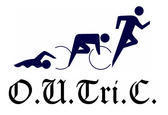Group Riding
Here are a few pointers on group cycling. Riding as a group can be quite dangerous if not done properly but we also totally understand that all the rules/etiquette can be a bit overwhelming!
The main message is to be PREDICTABLE (no brake slamming, random swerving, spontaneous sprints, etc.)
Preparation
Make sure you and your bike are prepared!
-
Ensure your bike is well maintained as misfiring gears or poor brakes can make you a liability in a bunch.
-
Carry suitable spares, clothing and some of your own food and drink so that you are self-reliant
-
Stay alert –don’t allow your mind to wander aimlessly and make sure you communicate!
-
No tri/aero bars on group rides. We’ve all been that guilty person who forgets to take them off but that’s going to hurt if you ram into someone else’s back!
Road positioning
-
Unless the group leader says otherwise, always ride two abreast. This means that the pack of cyclists is shorter in length, and therefore cars do not have so far to overtake.
-
Try and stay close to the person next to you but don’t push them into the curb/the middle of the road.
-
On some narrow country lanes or particularly busy roads we will merge into a single file, but this is generally at the discretion of the group leader who will shout ‘single out.’
-
Ride directly behind the wheel in front of you, keeping close but within your comfort zone. Never overlap your wheel with the one in front (very dangerous). Equally don’t leave a massive gap as this disrupts the group flow.
-
Half wheeling (riding slightly ahead of the person to your side) is an absolute no-no. This breaks the group up and makes everyone sad. The idea is to ride as an efficient and cohesive pack, not to show off to your mate next to you.
Calls and hand signals
-
This video gives examples of all the hand signals you’ll need to know.
-
All calls and hand signals must be repeated throughout the group; even if you can hear/see something shouted by a person in front, chances are the back pair can’t hear/see. If in doubt, shout - no one is going to criticise you for being overly cautious!
-
When slowing down for whatever reason (traffic lights, pedestrians, junctions etc.) shout ‘slowing’ or do the appropriate hand signal. If you’re at the back of the pack it can be very tricky to see hazards up ahead and the group needs to all slow down gradually together to prevent a pileup (not fun).
-
The dreaded Oxford pot holes: ideally point these out with a hand signal but if you need both hands to control your own bike due to the bad surface, shout ‘hole left’, ‘hole right’,or ‘hole middle’ if it’s between your 2-abreast pair. Repeat calls/signals through each pair!
-
If there are horse riders out on the roads, alert the rest of the group with ‘horses’ and reduce your speed considerably (but obviously without just slamming the brakes on).
-
If a car is about to overtake the pack it can be helpful to alert the group with ‘car back’ so no-one is taken by surprise. Similarly if the road is narrow, shouting ‘car up’ is useful so that the group is aware and can move towards the curb or single out if necessary.
Changing up
-
If the group leader, or the people cycling at the front, makes a call to ‘change-up’ or 'rotate', the rider on the front right of the group should slowly overtake the person to their left and slot in in-front of them. The line of riders on the right all then steadily move up one position, resulting in a new rider on the front right.
-
It is perfectly acceptable to miss a turn on the front by going through and asking the person who is on your right to move through again.
-
Changing-up allows riders to shelter from the wind and avoid sitting on the front for too long. It also means you’ll be able to change-up who you’re cycling next to, making your ride more sociable.
General cycling etiquette
-
If there is an emergency vehicle, pull in to the side of the road and allow it to pass safely.
-
Unless agreed beforehand, the whole group will stop for punctures or mechanicals.
-
Make sure you have everything you need (inner tube/pump/tyre levers), it’s not cool to rely on other people to bring these.
Above all, remember to always be PREDICTABLE. Hand signals and shouting out hazards go a long way. Don’t do anything random unless there’s an absolute emergency. And finally, if in doubt - ask the group leader or someone more experienced, we've all been there before!




